Roadside Memorials
They are everywhere, always in the most dangerous places. They exist on all roads, from the interstates of the Northeast to dirt tracks in the back country of Wyoming.
I spotted my first roadside memorial as a child from the back seat of my family’s 1960 Oldsmobile Rocket 88. Of this I am certain. I have no actual proof or defining memory, but these memorials have been in my consciousness since I was a child. I always rode in the rear passenger seat of that black Olds, so it must have been the case. That was my window on the road and the world.
I took in everything as it rushed by - poles, signs, roadside attractions, stores, people. Everything would blur past, but I would keep my nose to the glass or hang my head out the window like a dog, my mom yelling at me to pull myself back in. I don’t recall being attracted to the roadside memorials during my teen years. I was too busy being a teenager by then. I had less time to gawk and stare.
I went to Greece in the early 1980s and, on the treacherous mountain roads in the north, roadside memorials slammed back into my consciousness. Every sharp turn and steep embankment seemed to have a little shrine next to it where someone had died in a violent accident. No simple crosses, these memorials were small structures - elaborate miniature churches on poles with votive candles and other objects inside.
They were everywhere, always in the most dangerous places, and it got me thinking about mortality and remembrance. As a person of Greek ancestry, I’d like to proudly claim that we cornered the market on gloomy, morbid reminiscence. We did invent worry beads. After many years on the planet, though, I now know that it’s simply the human condition, expressed through different regional and cultural flavors.
As I hit my 30s and began to crisscross America by car, I tuned in again to these memorials which, in the U.S., usually take the form of a simple cross. Every state has them and they exist on all roads, from the interstates of the Northeast to dirt tracks in the back country of Wyoming. I have seen them on overpasses in New York City and on the main drag in Bakersfield, California. And, of course, everywhere in between. They are in all parts of the country, but seem to be especially concentrated in the southwest. They are in the medians, just off the road’s edge, on little ridges above the road, or in gullies below the road. There is no scheme or method to their placement, although they usually end up where the accident happened or the car landed.
There is never an explanation. The memorial is the statement. Sometimes people have left messages or a poem, laminated in plastic. Sometimes people have left flowers. And sometimes they are untended, tilting and fallen down. These are the saddest in an already sad collection. What is more poignant than a forgotten memorial?
They are almost all in dangerous places, which makes sense, and they are often difficult to photograph. I have stopped for some, in remote areas, and marveled at the beauty of the location, then thought back to what the accident scene must have been like, the flashing lights and the wrecker pulling the vehicle out of the weeds. Some are impossible to photograph and I just have to drive by and nod.
For the most part, they are crosses, but I have seen one Star of David memorial, built out of wooden slats. On the main road through the Tohono O’odham Nation, in southern Arizona, I saw many that resembled the little churches on poles that I saw in Greece, although these churches were in the adobe style. There were so many on that particular road that I stopped at least a dozen times. This must have looked suspicious and I was eventually pulled over by a local tribal police officer and told to stay on the pavement. He then followed me until I was off the reservation.
I went through a period - from the late 90s through 2005 - when I shot about 500 of these memorials. They seemed to be everywhere I went and I kept stopping to photograph them. I began to make decisions about my next turn based on where the road of crosses would lead me.
I am not a religious man, but I would stop and offer a short prayer or a moment of silence every time I documented one. I have rarely shot them since, although a few have been too compelling to pass by. I will include five of the photographs here, but I won’t comment on any of them, out of respect for the dead.
This piece first appeared in EXIT CULTURE: WORDS AND PHOTOS FROM THE OPEN ROAD. You can purchase the book on Amazon HERE.
If you can’t swing a regular subscription fee, consider helping to cover the costs of production via donations to Venmo or Paypal. Any amounts are appreciated!
Paul Vlachos is a writer, photographer and filmmaker. He was born in New York City, where he currently lives. He is the author of “The Space Age Now,” released in 2020, “Breaking Gravity,” in 2021, and the just-released “Exit Culture.”




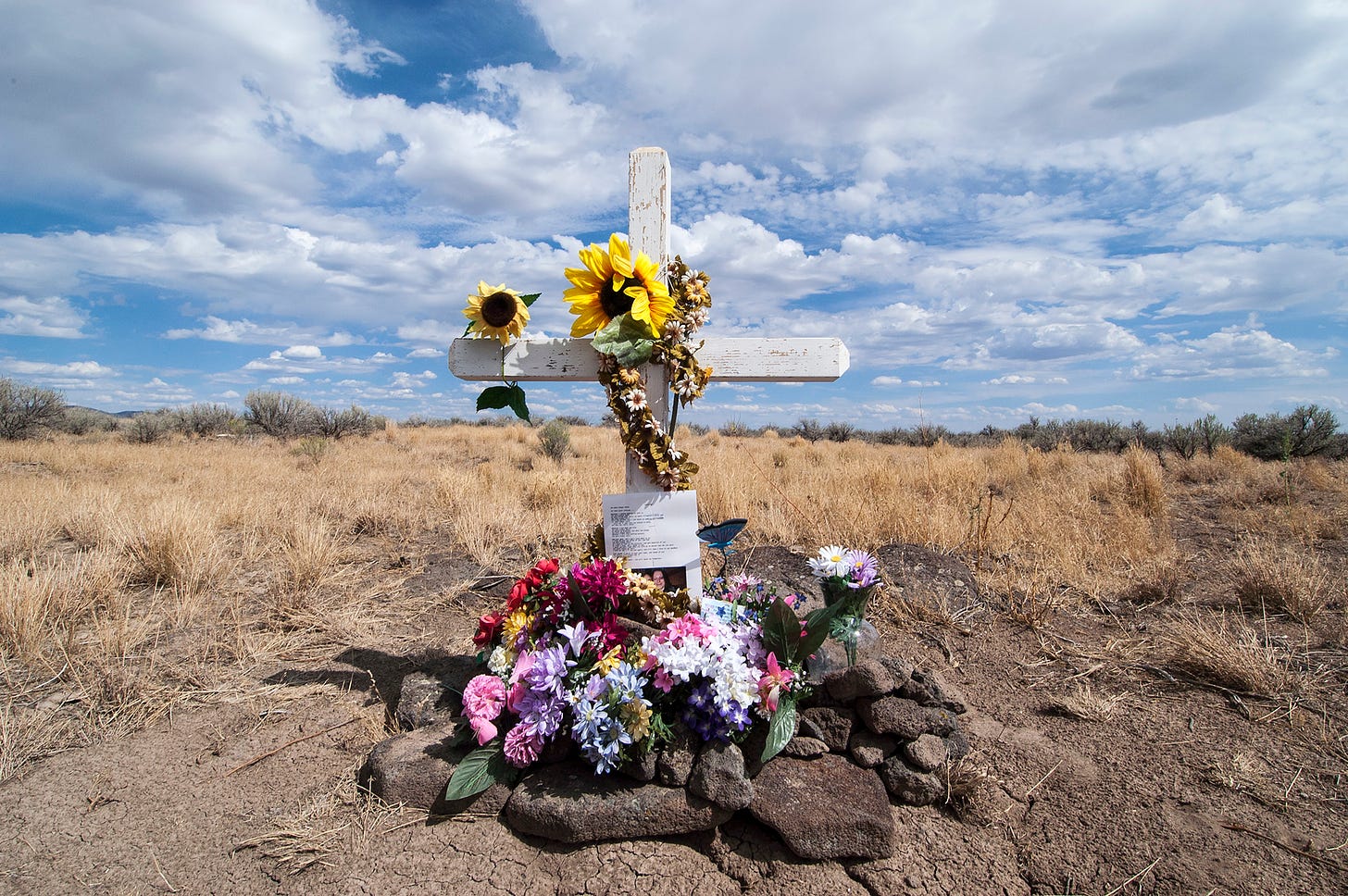
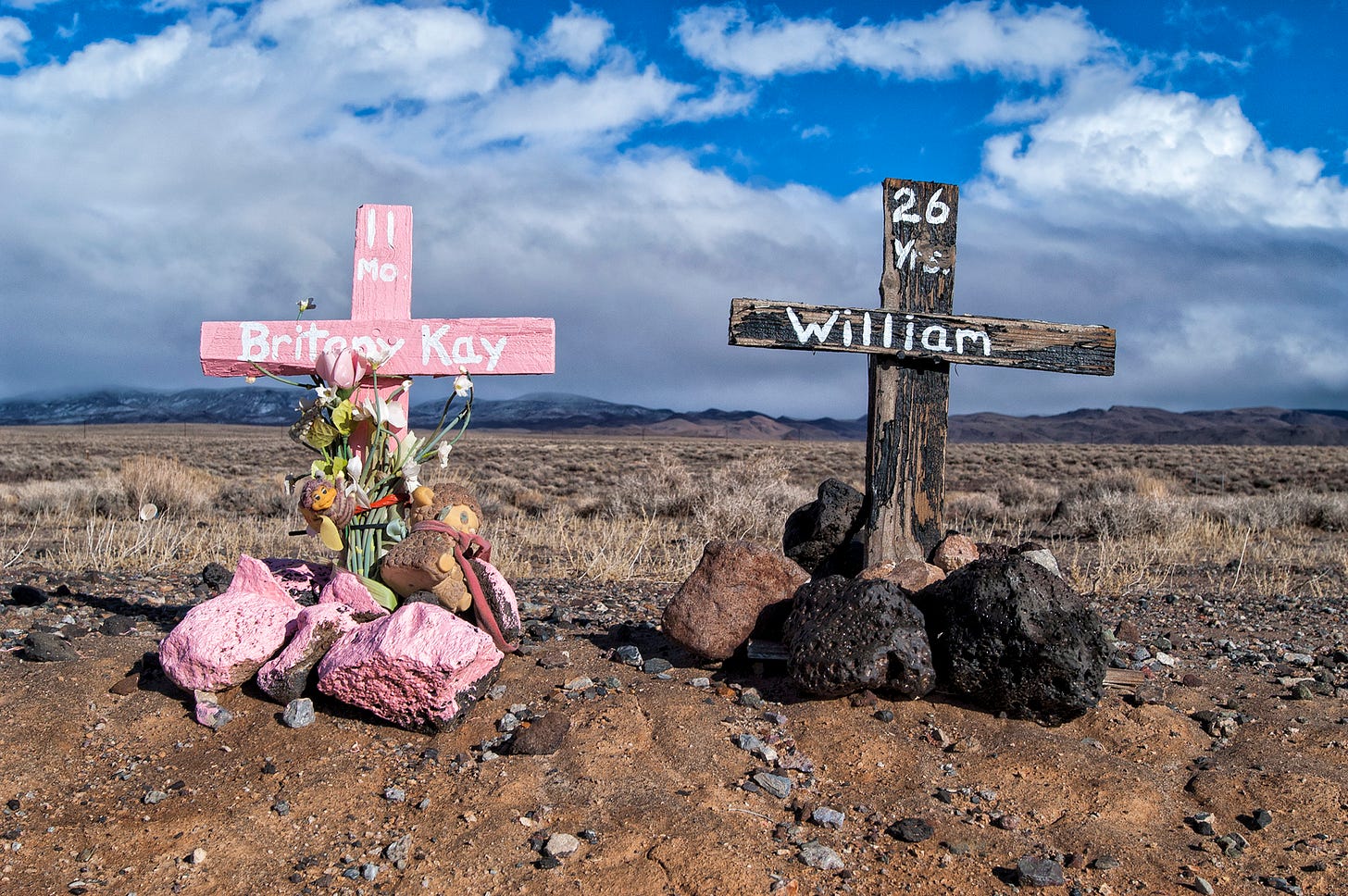
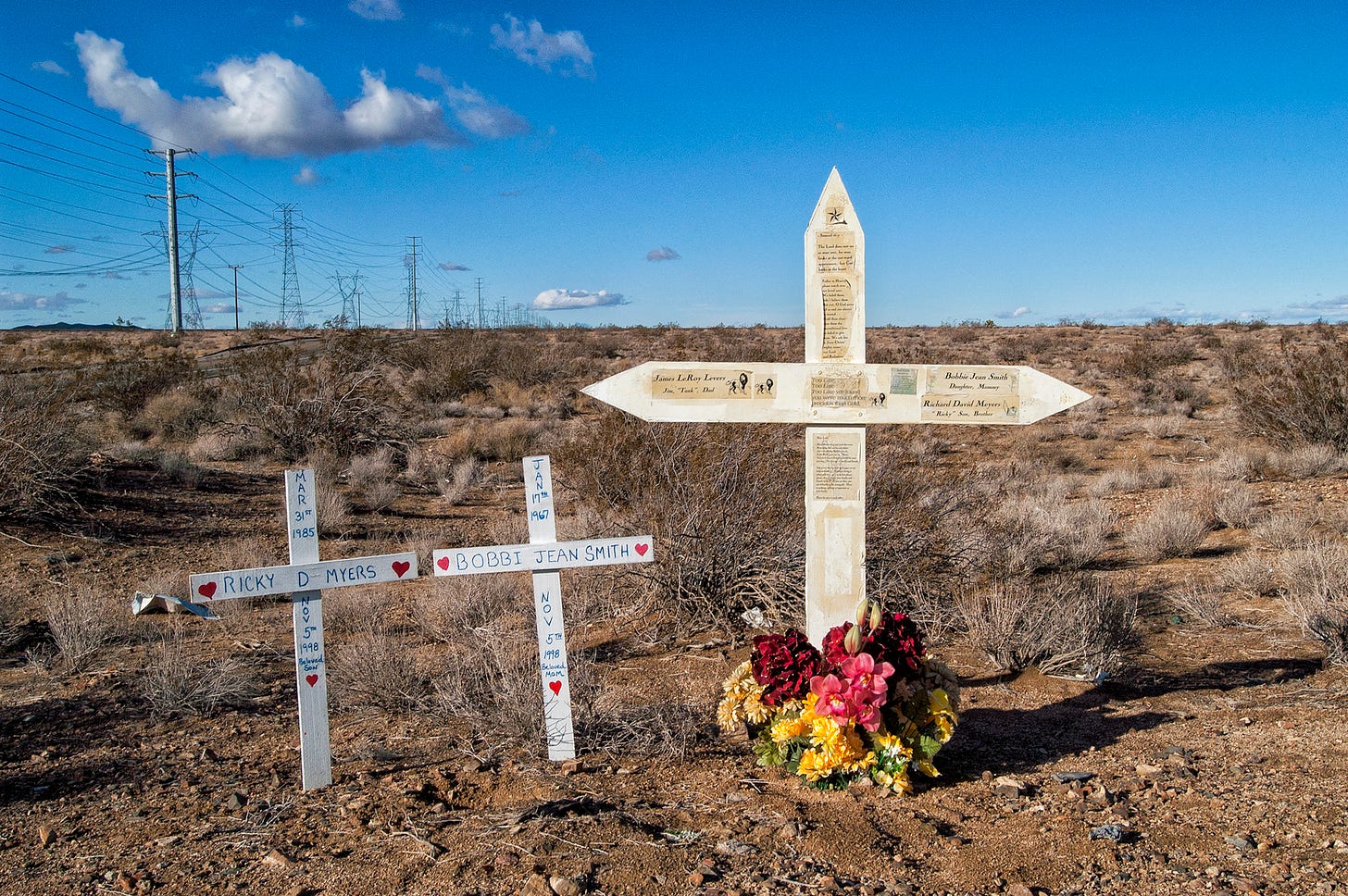
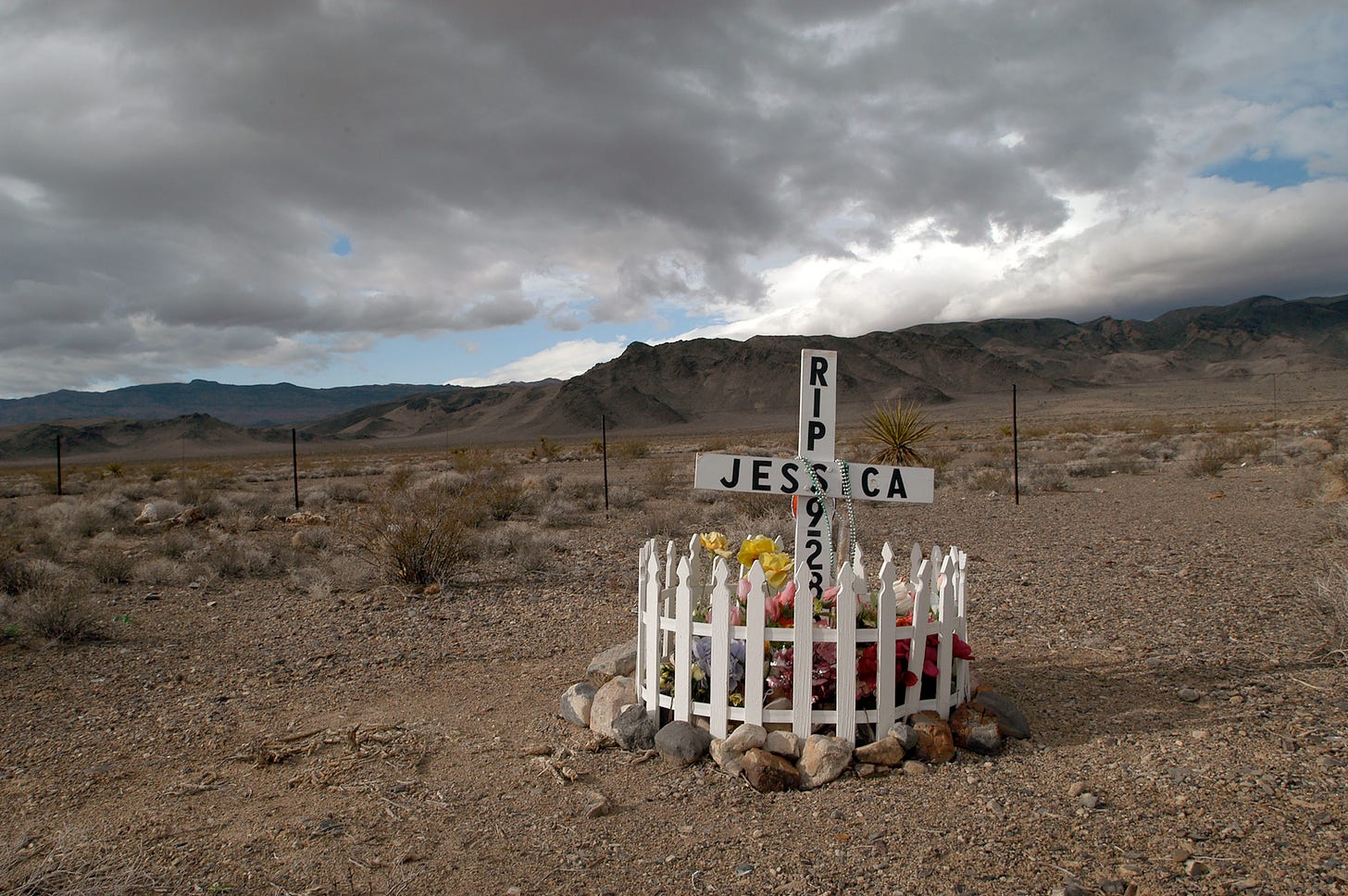
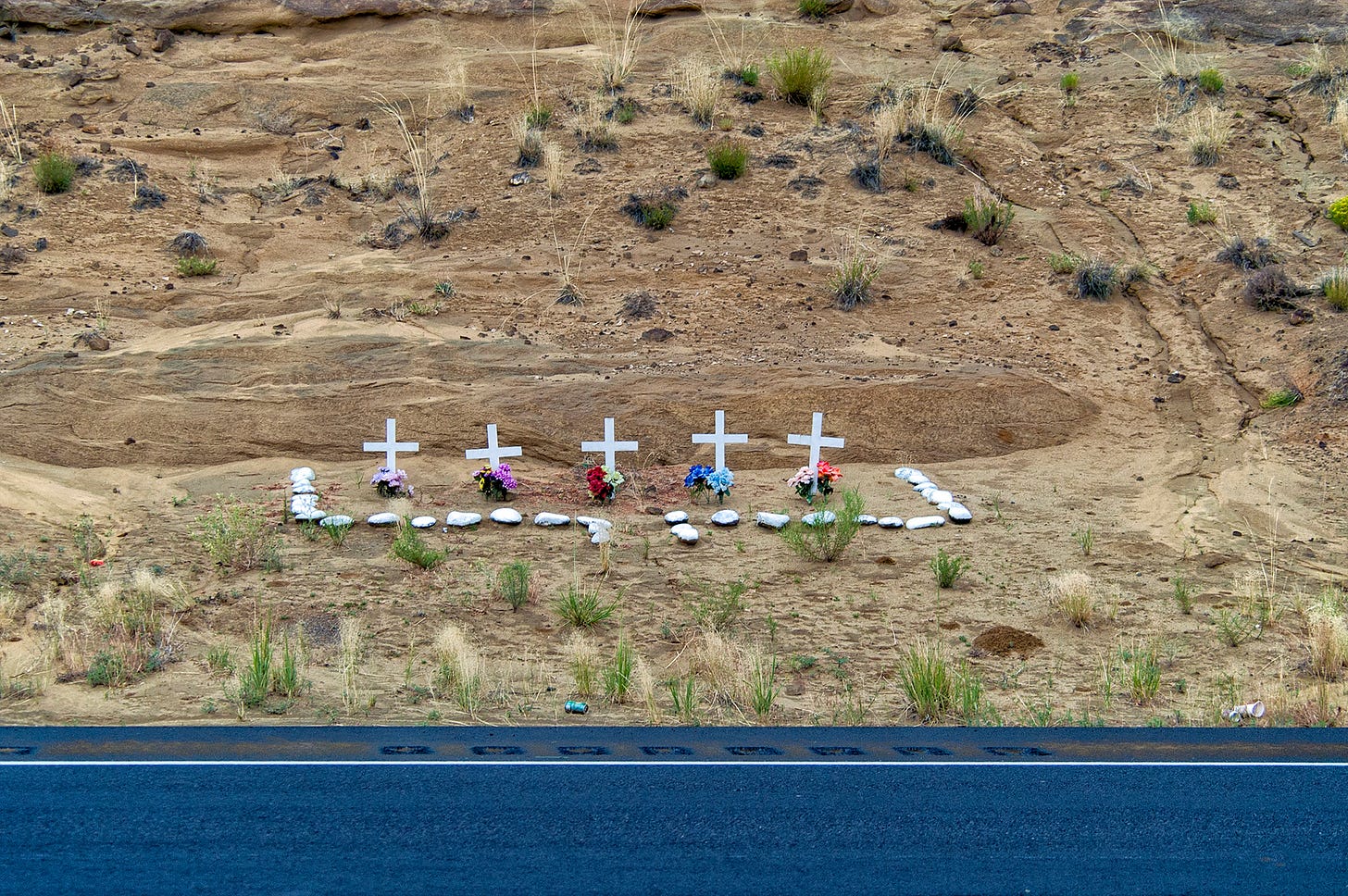
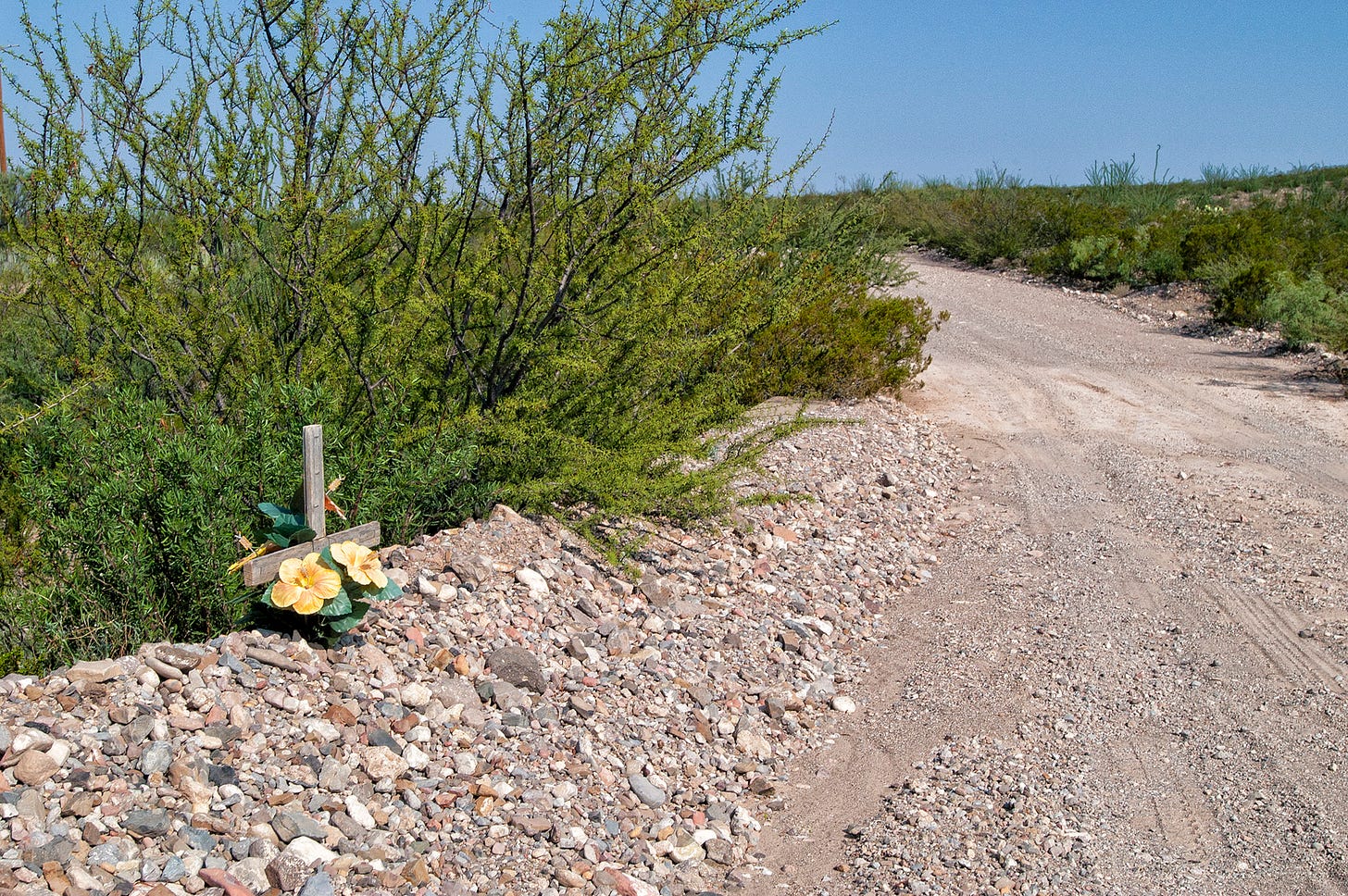
I love this piece and share your fascination with roadside memorials. In fact, you've scooped me in a way -- actually kicked me in the tuchus to write the damned piece about signs of our passage through the world. Nevada is a ripe place for such things. The desert tries to swallow us up, but we continue to shout our names so we won't be forgotten. Thank you, Paul, for this beautiful story.
Montana has been placing white crosses at crash sites since the 1950's as part of a driver safety program....there are roughly 2,500 markers across the state
http://www.mtlegion.org/highwayfatalitymarkers.html